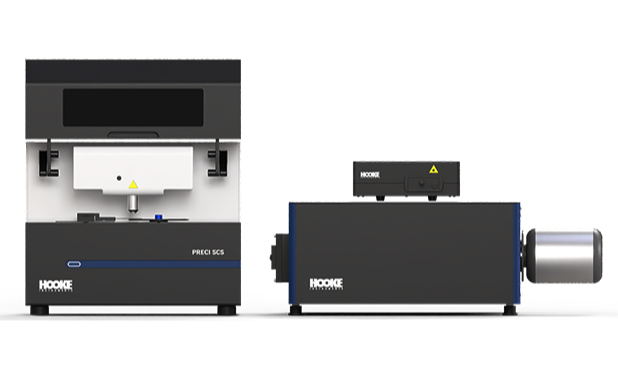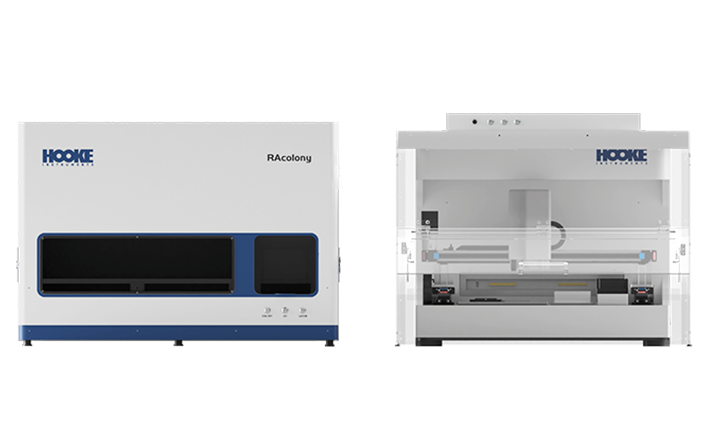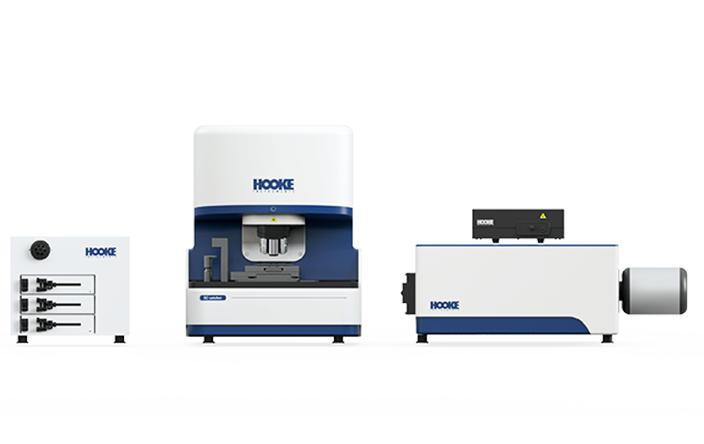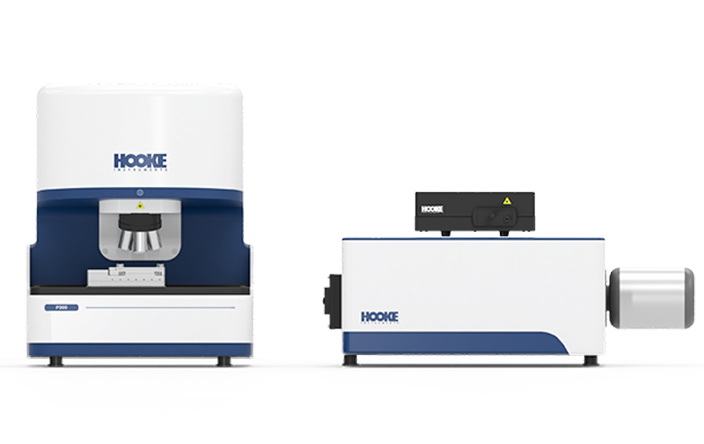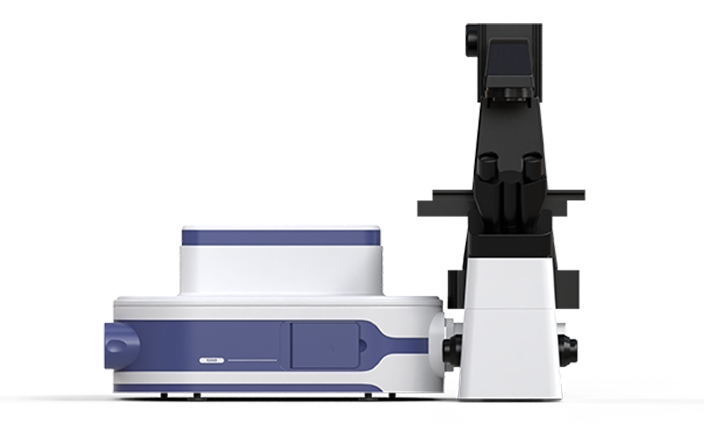Antimicrobial resistance is a pressing global medical challenge. conventional antimicrobial susceptibility testing requires isolation and purification culture, which is time-consuming. Combining deuterium oxide (D2O) labeling with Raman spectra acquisition, the P300 Confocal Raman Spectrometer enable rapid, culture-free detection of antimicrobial resistance in bacteria. Subsequently, the PRECI SCS Single-cell Sorter (or the PRECI SCS-R300 Raman Single-cell Sorter) is employed to isolate of resistant bacteria for further in-depth mechanism investigations. This allows for the indentification of the correlations between antimicrobial resistance phenotypes and their corresponding genotypes, offering a visual-guided research tool for studying the transfer of resistance genes in the environment.
-
Culture-free

-
Non-invasive

-
High Sensitivity

-
Low Cost


Culture-free Antimicrobial Susceptibility Testing Based on D2O-Raman

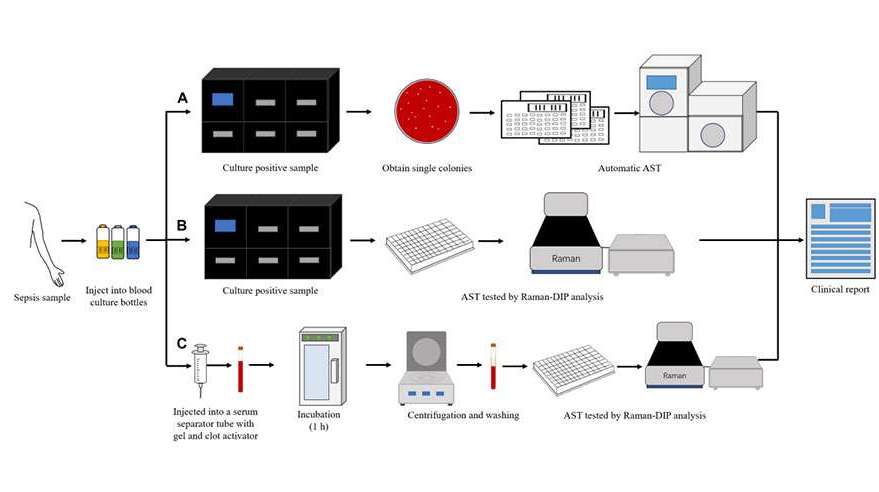
The absorption of stable isotopes (e.g., deuterium) by cells induces a shift in specific peaks of the Raman spectrum. Through incubation of microbial samples with heavy water (D₂O) and antibiotics, deuterium is incorporate into the carbon backbone of metabolically active microbes, leading to the emergence of C-D peaks in the spectral silent region. Using the P300 Confocal Raman Spectrometer, antimicrobial resistance can be rapidly detected.
Visual Detection of Horizontal Transfer of Antimicrobial Resistance Genes

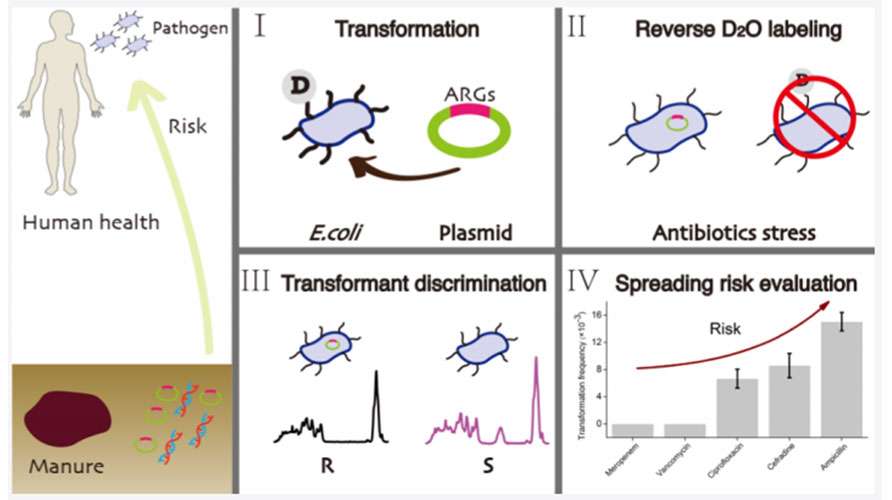
Using the Reverse D₂O single-cell Raman probing (Raman-rD₂O), the PRECI SCS-R300 Raman Single-Cell Sorter enables reliable and rapid tracking of the transfermation and spread of antimicrobial resistance genes. This method demonstrates exceptional sensitivity, allowing for the precise detection of a small number of resistant transformants within a large population of recipient bacteria. It is highly effective in unraveling the factors that govern the transfer and persistence of resistance plasmids. Moreover, by integrating this method with genotype analysis, it will significantly aid in preventing the spread of high-risk antimicrobial resistance genes.
Targeted Genomic Analysis of Antimicrobial Resistance Bacteria

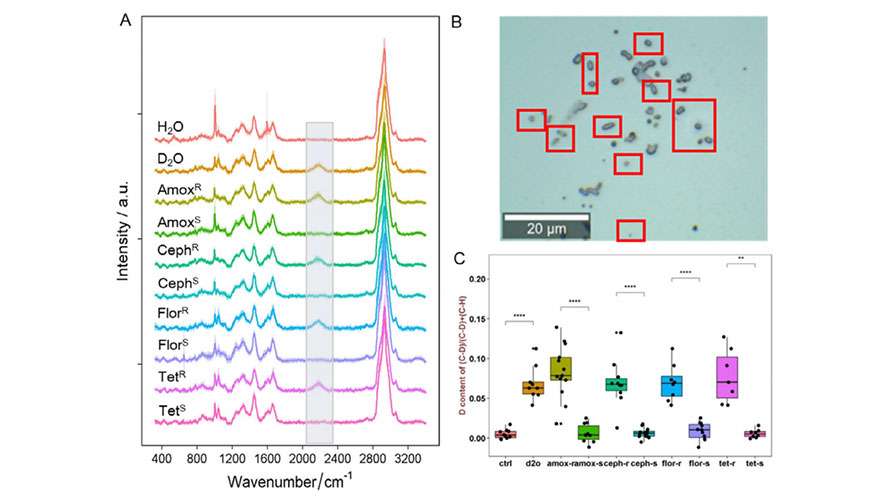
By integrating D2O-Raman technology with visual sorting technology, the PRECI SCS-R300 Raman Single Cell Sorter (or the Scather RA Single Cell Raman Optical Tweezers Sorter) can precisely identify and isolate microorganisms with antimicrobial resistance phenotypes from a population. The obtained single cells (or cell clusters) undergo whole-genome amplification followed by next-generation sequencing to acquire genetic information. Compared to conventional methods, this approach facilitates a more precise establishment of the correlation between phenotypes and genotypes.
-

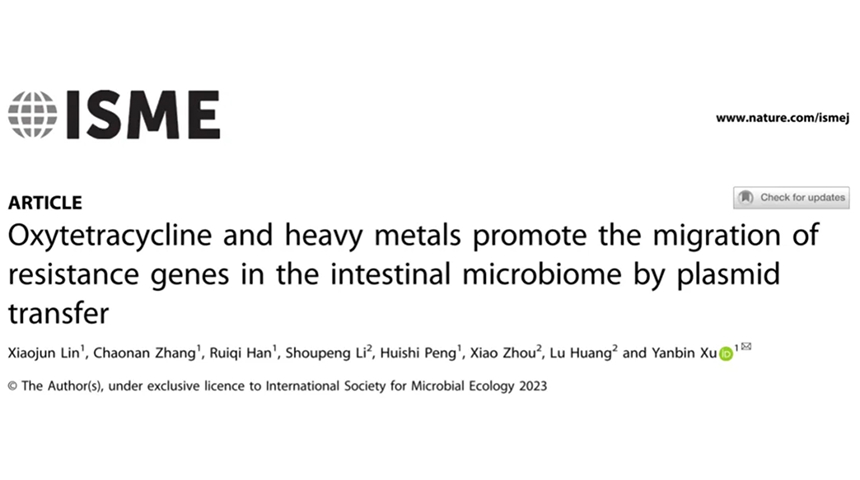 The ISME Journal丨Oxytetracycline and heavy metals promote the migration of resistance genes in the intestinal microbiome by plasmid transfer2024.04.10
The ISME Journal丨Oxytetracycline and heavy metals promote the migration of resistance genes in the intestinal microbiome by plasmid transfer2024.04.10 -

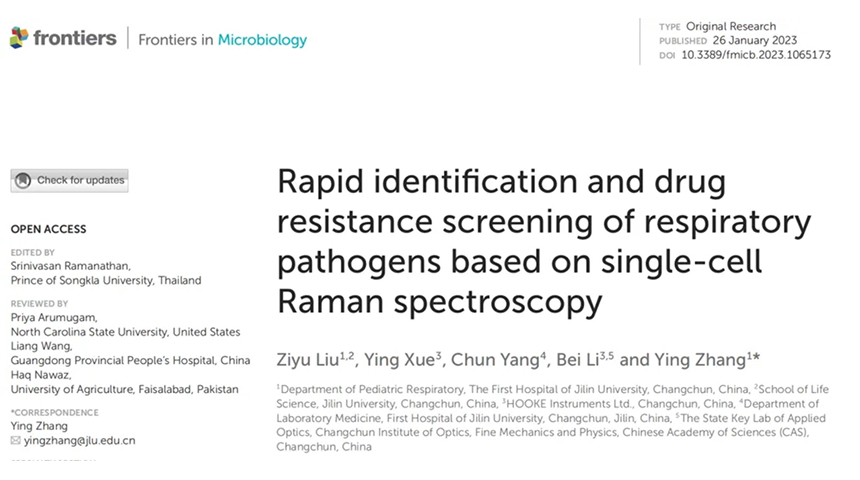 Frontiers in Microbiology丨Rapid identification and drug resistance screening of respiratory pathogens based on single-cell Raman spectroscopy2023.02.03
Frontiers in Microbiology丨Rapid identification and drug resistance screening of respiratory pathogens based on single-cell Raman spectroscopy2023.02.03 -

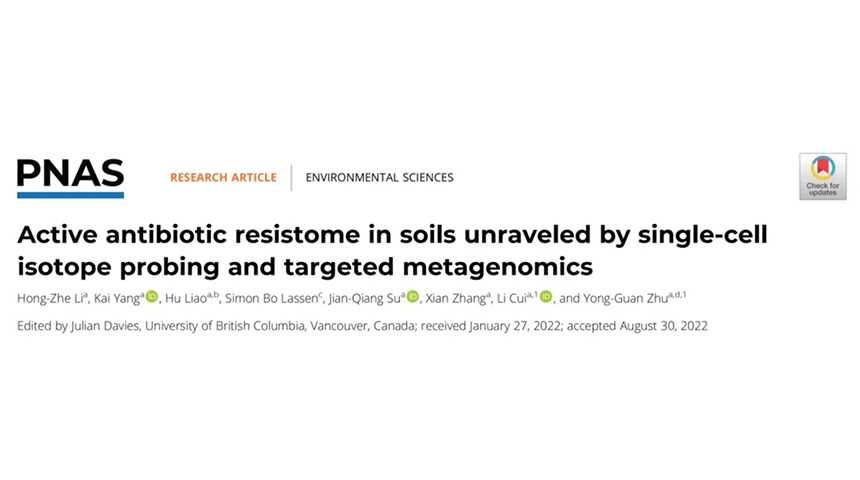 PNAS丨Active antibiotic resistome in soils unraveled by single-cell isotope probing and targeted metagenomics2022.09.28
PNAS丨Active antibiotic resistome in soils unraveled by single-cell isotope probing and targeted metagenomics2022.09.28 -

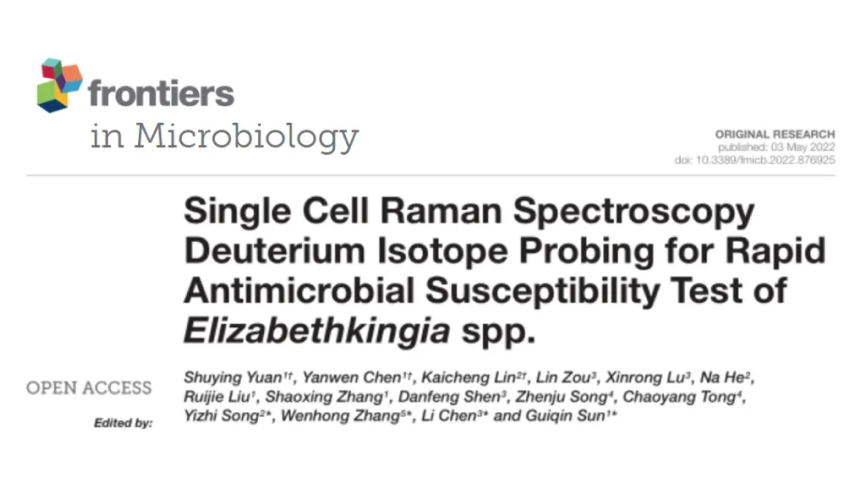 Frontiers in Microbiology丨Single Cell Raman Spectroscopy Deuterium Isotope Probing for Rapid Antimicrobial Susceptibility Test of Elizabethkingia spp2022.06.02
Frontiers in Microbiology丨Single Cell Raman Spectroscopy Deuterium Isotope Probing for Rapid Antimicrobial Susceptibility Test of Elizabethkingia spp2022.06.02 -

 Environmental Microbiology丨Raman-activated sorting of antibiotic-resistant bacteria in human gut microbiota2020.03.14
Environmental Microbiology丨Raman-activated sorting of antibiotic-resistant bacteria in human gut microbiota2020.03.14














